cover
1. Claims Distributions
Aggregate Loss Modeling.pdf
Approximating the Aggregate Claims Distribution.pdf
Bailey–Simon Method.pdf
Beekman’s Convolution Formula.pdf
Beta Function.pdf
Censored Distributions.pdf
Claim Size Processes.pdf
Collective Risk Models.pdf
Collective Risk Theory.pdf
Comonotonicity.pdf
Compound Distributions.pdf
Compound Poisson Frequency Models.pdf
Compound Process.pdf
Continuous Multivariate Distributions.pdf
Continuous Parametric Distributions.pdf
Convolutions of Distributions.pdf
Copulas.pdf
Cramer-Lundberg Asymptotics.pdf
Cramer-Lundberg Condition and Estimate.pdf
Credit Risk.pdf
De Pril Recursions and Approximations.pdf
Dependent Risks.pdf
Discrete Multivariate Distributions.pdf
Discrete Parametric Distributions.pdf
Discretization of Distributions.pdf
Empirical Distribution.pdf
Esscher Transform.pdf
Estimation.pdf
Extreme Value Distributions.pdf
Extreme Value Theory.pdf
Failure Rate.pdf
Gamma Function.pdf
Generalized Discrete Distributions.pdf
Heckman-Meyers Algorithm.pdf
Individual Risk Model.pdf
Inflation Impact on Aggregate Claims.pdf
Integrated Tail Distribution.pdf
Largest Claims and ECOMOR Reinsurance.pdf
Levy Processes.pdf
Lundberg Approximations, Generalized.pdf
Lundberg Inequality for Ruin Probability.pdf
Markov Chain Monte Carlo Methods.pdf
Mean Residual Lifetime.pdf
Mixed Poisson Distributions.pdf
Mixture of Distributions.pdf
Mixtures of Exponential Distributions.pdf
Options and Guarantees in Life Insurance.pdf
Ordering of Risks.pdf
Pareto Rating.pdf
Phase Method.pdf
Phase-type Distributions.pdf
Reliability Classifications.pdf
Retention and Reinsurance Programmes.pdf
Ruin Theory.pdf
Scale Distribution.pdf
Seasonality.pdf
Severity of Ruin.pdf
Stationary Processes.pdf
Stop-loss Premium.pdf
Stop-loss Reinsurance.pdf
Subexponential Distributions.pdf
Sundt and Jewell Class of Distributions.pdf
Sundt’s Classes of Distributions.pdf
Thinned Distributions.pdf
Time of Ruin.pdf
Truncated Distributions.pdf
Value-at-risk.pdf
Zero-modified Frequency Distributions.pdf
2. Collective Risk Theory
Adjustment Coefficient.pdf
Aggregate Loss Modeling.pdf
Ammeter Process.pdf
Ammeter, Hans (1912–1986).pdf
Approximating the Aggregate Claims Distribution.pdf
Bayesian Claims Reserving.pdf
Beekman’s Convolution Formula.pdf
Brownian Motion.pdf
Change of Measure.pdf
Claim Number Processes.pdf
Collective Risk Models.pdf
Collective Risk Theory.pdf
Comonotonicity.pdf
Compound Distributions.pdf
Compound Poisson Frequency Models.pdf
Compound Process.pdf
Convolutions of Distributions.pdf
Counting Processes.pdf
Coverage.pdf
Cramer, Harald (1893–1985).pdf
Cramer-Lundberg Asymptotics.pdf
Cramer-Lundberg Condition and Estimate.pdf
De Pril Recursions and Approximations.pdf
Dependent Risks.pdf
Diffusion Approximations.pdf
Dividends.pdf
Early Warning Systems.pdf
Esscher Transform.pdf
Financial Insurance.pdf
Gaussian Processes.pdf
Generalized Discrete Distributions.pdf
Heckman-Meyers Algorithm.pdf
Individual Risk Model.pdf
Integrated Tail Distribution.pdf
Large Deviations.pdf
Lundberg Approximations, Generalized.pdf
Lundberg Inequality for Ruin Probability.pdf
Markov Chains and Markov Processes.pdf
Markov Models in Actuarial Science.pdf
Mean Residual Lifetime.pdf
Mixtures of Exponential Distributions.pdf
Nonparametric Statistics.pdf
Occurrence-Exposure Rate.pdf
Operational Time.pdf
Phase Method.pdf
Point Processes.pdf
Poisson Processes.pdf
Reliability Classifications.pdf
Renewal Theory.pdf
Retrospective Premium.pdf
Risk Management- An Interdisciplinary Framework.pdf
Risk Measures.pdf
Risk Minimization.pdf
Risk Process.pdf
Ruin Theory.pdf
Seasonality.pdf
Segerdahl, Carl–Otto (1912–1972).pdf
Severity of Ruin.pdf
Shot-noise Processes.pdf
Simulation of Risk Processes.pdf
Solvency.pdf
Stability.pdf
Stochastic Simulation.pdf
Stop-loss Premium.pdf
Subexponential Distributions.pdf
Surplus Process.pdf
Time of Ruin.pdf
3. Direct Nonlife Insurance
Accident Insurance.pdf
Accounting.pdf
Actuary.pdf
Affine Models of the Term Structure of Interest Rates.pdf
Aggregate Loss Modeling.pdf
ALAE.pdf
Annual Statements.pdf
Antiselection, Non-life.pdf
Aquaculture Insurance.pdf
ASTIN.pdf
Automobile Insurance, Commercial.pdf
Automobile Insurance, Private.pdf
Aviation Insurance.pdf
Beard, Robert Eric (1911–1983).pdf
Bonus-Malus Systems.pdf
Bundling.pdf
Burglary Insurance.pdf
Captives.pdf
Casualty Actuarial Society.pdf
Catastrophe Excess of Loss.pdf
Claim Frequency.pdf
Claim Number Processes.pdf
Closed Claim.pdf
Coinsurance.pdf
Combined Ratio.pdf
Commercial Multi-peril Insurance.pdf
Consequential Damage.pdf
Cooperative Game Theory.pdf
Coverage.pdf
Crop Insurance.pdf
Deductible.pdf
Demutualization.pdf
Dependent Risks.pdf
Deregulation of Commercial Insurance.pdf
DFA - Dynamic Financial Analysis.pdf
Duration.pdf
Dynamic Financial Modeling of an Insurance Enterprise.pdf
Earthquake Insurance.pdf
Employer’s Liability Insurance.pdf
Employment Practices Liability Insurance.pdf
Expense Ratios.pdf
Fidelity and Surety.pdf
Financial Engineering.pdf
Financial Insurance.pdf
Fire Insurance.pdf
Flood Risk.pdf
Franckx, Edouard (1907–1988).pdf
Fraud in Insurance.pdf
History of Insurance.pdf
Homeowners Insurance.pdf
Insurance Company.pdf
Insurance Forms.pdf
Insurance Regulation and Supervision.pdf
Lapses.pdf
Leverage.pdf
Liability Insurance.pdf
Lloyd’s.pdf
Long-tail Business.pdf
Loss Ratio.pdf
Loss-of-Profits Insurance.pdf
Marine Insurance.pdf
Mass Tort Liabilities.pdf
Mortgage Insurance in the United States.pdf
Mutuals.pdf
Natural Hazards.pdf
Non-life Insurance.pdf
P&I Clubs.pdf
Policy.pdf
Pooling in Insurance.pdf
Premium.pdf
Property Insurance - Personal.pdf
Ratemaking.pdf
Replacement Value.pdf
Reserving in Non-life Insurance.pdf
Risk Classification, Practical Aspects1.pdf
Risk Classification, Pricing Aspects.pdf
Risk Statistics.pdf
Self-insurance.pdf
Sickness Insurance.pdf
Total Loss.pdf
Travel Insurance.pdf
Unemployment Insurance.pdf
Workers’ Compensation Insurance.pdf
4. Economics
Adverse Selection.pdf
Audit.pdf
Background Risk.pdf
Borch, Karl Henrik (1919–1986).pdf
Borch’s Theorem.pdf
Capital Allocation for P&C Insurers- A Survey of Methods.pdf
Collective Risk Theory.pdf
Complete Markets.pdf
Convexity.pdf
Cooperative Game Theory.pdf
De Finetti, Bruno (1906–1985).pdf
Decision Theory.pdf
Deregulation of Commercial Insurance.pdf
Derivative Securities.pdf
DFA - Dynamic Financial Analysis.pdf
Efficient Markets Hypothesis.pdf
Equilibrium Theory.pdf
Finance.pdf
Financial Economics.pdf
Financial Intermediaries- the Relationship Between their Economic Functions and Actuarial Risks.pdf
Financial Markets.pdf
Fraud in Insurance.pdf
Free Riding.pdf
Frontier Between Public and Private Insurance Schemes.pdf
Incomplete Markets.pdf
Insolvency.pdf
Insurability.pdf
Lotteries.pdf
Market Equilibrium.pdf
Moral Hazard.pdf
Noncooperative Game Theory.pdf
Nonexpected Utility Theory.pdf
Oligopoly in Insurance Markets.pdf
Operations Research.pdf
Optimal Risk Sharing.pdf
Ordering of Risks.pdf
Pareto Optimality.pdf
Pooling Equilibria.pdf
Pooling in Insurance.pdf
Portfolio Theory.pdf
Premium Principles.pdf
Reinsurance Forms.pdf
Retention and Reinsurance Programmes.pdf
Risk Aversion.pdf
Risk Management- An Interdisciplinary Framework.pdf
Risk Measures.pdf
Risk Minimization.pdf
Risk Utility Ranking.pdf
Risk-based Capital Allocation.pdf
Solvency.pdf
Stochastic Control Theory.pdf
Stochastic Orderings.pdf
Underwriting Cycle.pdf
Utility Maximization.pdf
Utility Theory.pdf
Wilkie Investment Model.pdf
5. Finance
Accounting.pdf
Affine Models of the Term Structure of Interest Rates.pdf
AFIR.pdf
Alternative Risk Transfer.pdf
Arbitrage.pdf
Asset Management.pdf
Asset–Liability Modeling.pdf
Assets in Pension Funds.pdf
Association of Actuaries and Financial Analysts.pdf
Background Risk.pdf
Binomial Model.pdf
Black–Scholes Model.pdf
Brownian Motion.pdf
Capital Allocation for P&C Insurers- A Survey of Methods.pdf
Capital in Life Assurance.pdf
Catastrophe Derivatives.pdf
Change of Measure.pdf
Collective Investment (Pooling).pdf
Complete Markets.pdf
Credit Risk.pdf
Credit Scoring.pdf
Derivative Pricing, Numerical Methods.pdf
Derivative Securities.pdf
DFA - Dynamic Financial Analysis.pdf
Diffusion Processes.pdf
Dynamic Financial Modeling of an Insurance Enterprise.pdf
Early Warning Systems.pdf
Efficient Markets Hypothesis.pdf
Equilibrium Theory.pdf
Esscher Transform.pdf
Finance.pdf
Financial Economics.pdf
Financial Engineering.pdf
Financial Intermediaries- the Relationship Between their Economic Functions and Actuarial Risks.pdf
Financial Markets.pdf
Financial Pricing of Insurance.pdf
Financial Reinsurance.pdf
Fixed-income Security.pdf
Foreign Exchange Risk in Insurance.pdf
Hedging and Risk Management.pdf
Hidden Markov Models.pdf
History of Actuarial Profession.pdf
Incomplete Markets.pdf
Index-linked Security.pdf
Inflation- A Case Study.pdf
Insolvency.pdf
Insurability.pdf
Interest-rate Modeling.pdf
Interest-rate Risk and Immunization.pdf
Ito Calculus.pdf
Life Insurance.pdf
Life Reinsurance.pdf
Logistic Regression Model.pdf
Market Equilibrium.pdf
Market Models.pdf
Martingales.pdf
Matching.pdf
Model Office.pdf
Noncooperative Game Theory.pdf
Options and Guarantees in Life Insurance.pdf
Ornstein-Uhlenbeck Process.pdf
Participating Business.pdf
Pensions.pdf
Portfolio Theory.pdf
Premium Principles.pdf
Present Values and Accumulations.pdf
Profit Testing.pdf
Redington, Frank Mitchell (1906–1984).pdf
Reinsurance – Terms, Conditions, and Methods of Placing.pdf
Reinsurance Supervision.pdf
Reinsurance1.pdf
Untitled
Risk Measures.pdf
Risk-based Capital Requirements.pdf
Self-insurance.pdf
Shot-noise Processes.pdf
Simulation Methods for Stochastic Differential Equations.pdf
Stochastic Control Theory.pdf
Stochastic Investment Models.pdf
Surplus in Life and Pension Insurance.pdf
Time Series.pdf
Transaction Costs.pdf
Underwriting Cycle.pdf
Unit-linked Business.pdf
Utility Maximization.pdf
Valuation of Life Insurance Liabilities.pdf
Value-at-risk.pdf
Volatility.pdf
Wilkie Investment Model.pdf
6. Life, Pension and Health Insurance
Accident Insurance.pdf
Actuarial Control Cycle.pdf
Actuary.pdf
American Society of Pension Actuaries.pdf
Annuities.pdf
Asset Management.pdf
Asset Shares.pdf
Assets in Pension Funds.pdf
Capital in Life Assurance.pdf
Censored Distributions.pdf
Censoring.pdf
Cohort.pdf
Commutation Functions.pdf
Competing Risks.pdf
De Moivre, Abraham (1667–1754).pdf
De Witt, Johan (1625–1672).pdf
Decrement Analysis.pdf
Demography.pdf
Dependent Risks.pdf
Disability Insurance.pdf
Disability Insurance,Numerical Methods
Dodson, James (1710–1757).pdf
Dynamic Financial Modeling of an Insurance Enterprise.pdf
Early Mortality Tables.pdf
Early Warning Systems.pdf
Estate.pdf
Euler–Maclaurin Expansion and Woolhouse’s Formula.pdf
Frailty.pdf
Fraud in Insurance.pdf
Genetics and Insurance.pdf
Gompertz, Benjamin (1779–1865).pdf
Graduation.pdf
Graunt, John (1620–1674).pdf
Group Life Insurance.pdf
Halley, Edmond (1656–1742).pdf
Hattendorff’s Theorem.pdf
Health Insurance.pdf
Heterogeneity in Life Insurance.pdf
History of Actuarial Education.pdf
History of Actuarial Profession.pdf
History of Insurance.pdf
International Actuarial Notation.pdf
Lexis Diagram.pdf
Lidstone, George James (1870–1952).pdf
Lidstone’s Theorem.pdf
Life Insurance.pdf
Life Table Data, Combining.pdf
Life Table.pdf
Linton, Morris Albert (1887–1966).pdf
Long-term Care Insurance.pdf
Lundberg, Filip (1876–1965).pdf
Markov Models in Actuarial Science.pdf
Mass Tort Liabilities.pdf
Maturity Guarantees Working Party.pdf
Maximum Likelihood.pdf
Model Office.pdf
Mortality Laws.pdf
Options and Guarantees in Life Insurance.pdf
Participating Business.pdf
Pension Fund Mathematics.pdf
Pensions- Finance, Risk and Accounting.pdf
Pensions, Individual.pdf
Pensions.pdf
Present Values and Accumulations.pdf
Price, Richard (1723–1791).pdf
Profit Testing.pdf
Risk Classification, Pricing Aspects.pdf
Risk-based Capital Requirements.pdf
Sickness Insurance.pdf
Social Security.pdf
Surplus in Life and Pension Insurance.pdf
Surrenders and Alterations.pdf
Technical Bases in Life Insurance.pdf
Unit-linked Business.pdf
Valuation of Life Insurance Liabilities.pdf
Waring’s Theorem.pdf
Wilkie Investment Model.pdf
7. Organizations, Journals and History
Actuarial Institute of the Republic of China.pdf
Actuarial Research Clearing House (ARCH).pdf
Actuarial Society of Ghana.pdf
Actuarial Society of Hong Kong.pdf
Actuary.pdf
AFIR.pdf
Aktuarvereinigung Osterreichs (Austrian Actuarial Association).pdf
American Academy of Actuaries.pdf
American Risk and Insurance Association (ARIA).pdf
American Society of Pension Actuaries.pdf
Ammeter, Hans (1912–1986).pdf
Argentina, Actuarial Associations.pdf
Association of Actuaries and Financial Analysts.pdf
Association Royale des Actuaires Belges.pdf
ASTIN.pdf
Bailey, Arthur L. (1905–1954).pdf
Beard, Robert Eric (1911–1983).pdf
Bernoulli Family.pdf
Borch, Karl Henrik (1919–1986).pdf
Brazilian Institute of Actuaries (IBA).pdf
British Actuarial Journal.pdf
Canadian Institute of Actuaries.pdf
Casualty Actuarial Society.pdf
Ceska Spolecnost Aktuaru (The Czech Society of Actuaries).pdf
China, Development of Actuarial Science.pdf
Col-legi d’Actuaris de Catalunya.pdf
Combinatorics.pdf
Competing Risks.pdf
Conference of Consulting Actuaries.pdf
Cramer, Harald (1893–1985).pdf
Croatian Actuarial Association.pdf
Cyprus Association of Actuaries (CAA).pdf
De Finetti, Bruno (1906–1985).pdf
De Moivre, Abraham (1667–1754).pdf
De Witt, Johan (1625–1672).pdf
Decrement Analysis.pdf
Demography.pdf
Den Danske Aktuarforening (The Danish Society of Actuaries).pdf
Den Norske Aktuarforening (The Norwegian Society of Actuaries).pdf
Deutsche Aktuarvereinigung e. V. (DAV).pdf
Dodson, James (1710–1757).pdf
Early Mortality Tables.pdf
Estonian Actuarial Society.pdf
Faculty of Actuaries.pdf
Franckx, Edouard (1907–1988).pdf
Gompertz, Benjamin (1779–1865).pdf
Graduation.pdf
Graphical Methods.pdf
Graunt, John (1620–1674).pdf
Groupe Consultatif Actuariel Europeen.pdf
Halley, Edmond (1656–1742).pdf
Hellenic Actuarial Society.pdf
Het Actuarieel Genootschap (The Dutch Actuarial Society).pdf
History of Actuarial Education.pdf
History of Actuarial Profession.pdf
History of Actuarial Science.pdf
History of Insurance.pdf
Hungarian Actuarial Society.pdf
Huygens, Christiaan and Lodewijck (1629–1695).pdf
I nternational Actuarial Association.pdf
Institut des Actuaires.pdf
Institute of Actuaries of Australia.pdf
Institute of Actuaries of Japan.pdf
Institute of Actuaries.pdf
Insurance Company.pdf
Insurance- Mathematics and Economics.pdf
International Association for the Study of Insurance Economics – ‘The Geneva Association’.pdf
International Association of Consulting Actuaries.pdf
Israel Association of Actuaries.pdf
Istituto Italiano degli Attuari.pdf
Journal of Actuarial Practice.pdf
Latvian Actuarial Association.pdf
Lidstone, George James (1870–1952).pdf
Linton, Morris Albert (1887–1966).pdf
Lloyd’s.pdf
Long-term Care Insurance.pdf
Lotteries.pdf
Lundberg, Filip (1876–1965).pdf
McClintock, Emory (1840–1916).pdf
Mexico, Actuarial Associations.pdf
Mortality Laws.pdf
National Associations of Actuaries.pdf
New Zealand Society of Actuaries.pdf
Pakistan Society of Actuaries.pdf
Persatuan Aktuari Malaysia.pdf
Polskie Stowarzyszenie Aktuariuszy.pdf
Portuguese Institute of Actuaries.pdf
Price, Richard (1723–1791).pdf
Probability Theory.pdf
Professionalism.pdf
Redington, Frank Mitchell (1906–1984).pdf
RESTIN.pdf
Risk-based Capital Requirements.pdf
Rubinow, Isaac Max (1875–1936).pdf
Scandinavian Actuarial Journal.pdf
Segerdahl, Carl–Otto (1912–1972).pdf
Singapore Actuarial Society.pdf
Slovak Society of Actuaries.pdf
Slovensko Aktuarsko Drustvo (The Slovenian Association of Actuaries).pdf
Society of Actuaries.pdf
Suomen Aktuaariyhdistys (The Actuarial Society of Finland).pdf
Svenska Aktuarieforeningen, Swedish Society of Actuaries.pdf
Sverdrup, Erling (1917–1994).pdf
Swiss Association of Actuaries.pdf
Thiele, Thorvald Nicolai (1838–1910).pdf
Ukrainian Actuarial Society.pdf
Utility Theory.pdf
Wright, Elizur (1804–1885).pdf
8. Premium Calculation, Nonlife
Adverse Selection.pdf
Alternative Risk Transfer.pdf
Automobile Insurance, Private.pdf
Bailey–Simon Method.pdf
Bayesian Statistics.pdf
Bonus-Malus Systems.pdf
Burning Cost.pdf
Catastrophe Models and Catastrophe Loads.pdf
Claim Size Processes.pdf
Credibility Theory.pdf
Decision Theory.pdf
Dirichlet Processes.pdf
Disability Insurance.pdf
Discretization of Distributions.pdf
Experience-rating.pdf
Financial Pricing of Insurance.pdf
Foreign Exchange Risk in Insurance.pdf
Fuzzy Set Theory.pdf
Group Life Insurance.pdf
Heterogeneity in Life Insurance.pdf
Homeowners Insurance.pdf
Kalman Filter, Reserving Methods.pdf
Kalman Filter.pdf
Life Insurance.pdf
Long-tail Business.pdf
Nonparametric Statistics.pdf
Nonproportional Reinsurance.pdf
Ordering of Risks.pdf
Premium Principles.pdf
Premium.pdf
Ratemaking.pdf
Reinsurance Pricing.pdf
Retention and Reinsurance Programmes.pdf
Retrospective Premium.pdf
Risk Classification, Practical Aspects1.pdf
Risk Measures.pdf
Risk Utility Ranking.pdf
Stochastic Orderings.pdf
Stop-loss Reinsurance.pdf
9. Probability Theory
Adjustment Coefficient.pdf
Affine Models of the Term Structure of Interest Rates.pdf
Ammeter Process.pdf
Approximating the Aggregate Claims Distribution.pdf
Bayesian Statistics.pdf
Beekman’s Convolution Formula.pdf
Bernoulli Family.pdf
Binomial Model.pdf
Black–Scholes Model.pdf
Bonus-Malus Systems.pdf
Brownian Motion.pdf
Catastrophe Derivatives.pdf
Censoring.pdf
Central Limit Theorem.pdf
Change of Measure.pdf
Collective Risk Models.pdf
Combinatorics.pdf
Competing Risks.pdf
Continuous Multivariate Distributions.pdf
Continuous Parametric Distributions.pdf
Convexity.pdf
Convolutions of Distributions.pdf
Copulas.pdf
Coupling
Coverage.pdf
Cramer, Harald (1893–1985).pdf
Cramer-Lundberg Asymptotics.pdf
Cramer-Lundberg Condition and Estimate.pdf
Credit Scoring.pdf
De Moivre, Abraham (1667–1754).pdf
Decrement Analysis.pdf
Derivative Pricing, Numerical Methods.pdf
Diffusion Approximations.pdf
Dirichlet Processes.pdf
Discrete Multivariate Distributions.pdf
Discrete Parametric Distributions.pdf
Estimation.pdf
Extreme Value Theory.pdf
Extremes.pdf
Failure Rate.pdf
Filtration.pdf
Finance.pdf
Fuzzy Set Theory.pdf
Gaussian Processes.pdf
Generalized Discrete Distributions.pdf
Generalized Linear Models.pdf
Genetics and Insurance.pdf
Hattendorff’s Theorem.pdf
Heckman-Meyers Algorithm.pdf
Hidden Markov Models.pdf
Huygens, Christiaan and Lodewijck (1629–1695).pdf
Inflation Impact on Aggregate Claims.pdf
Information Criteria.pdf
Integrated Tail Distribution.pdf
Interest-rate Modeling.pdf
Ito Calculus.pdf
Large Deviations.pdf
Levy Processes.pdf
Life Insurance Mathematics.pdf
Life Table.pdf
Long Range Dependence.pdf
Lundberg Approximations, Generalized.pdf
Lundberg Inequality for Ruin Probability.pdf
Lundberg, Filip (1876–1965).pdf
Market Models.pdf
Markov Chains and Markov Processes.pdf
Markov Models in Actuarial Science.pdf
Martingales.pdf
Maturity Guarantees Working Party.pdf
Mixed Poisson Distributions.pdf
Mixture of Distributions.pdf
Multivariate Statistics.pdf
Neural Networks.pdf
Non-life Reserves – Continuous-time Micro Models.pdf
Numerical Algorithms.pdf
Operational Time.pdf
Operations Research.pdf
Ornstein-Uhlenbeck Process.pdf
Pension Fund Mathematics.pdf
Phase Method.pdf
Phase-type Distributions.pdf
Point Processes.pdf
Poisson Processes.pdf
Probability Theory.pdf
Queueing Theory.pdf
Random Number Generation and Quasi-Monte Carlo.pdf
Random Variable.pdf
Random Walk.pdf
Rare Event.pdf
Regenerative Processes.pdf
Reliability Analysis.pdf
Reliability Classifications.pdf
Renewal Theory.pdf
Risk Process.pdf
Robustness.pdf
Ruin Theory.pdf
Severity of Ruin.pdf
Shot-noise Processes.pdf
Simulation Methods for Stochastic Differential Equations.pdf
Simulation of Risk Processes.pdf
Simulation of Stochastic Processes.pdf
Stability.pdf
Stationary Processes.pdf
Stochastic Control Theory.pdf
Stochastic Optimization.pdf
Stochastic Orderings.pdf
Stochastic Processes.pdf
Subexponential Distributions.pdf
Surplus Process.pdf
Survival Analysis.pdf
Sverdrup, Erling (1917–1994).pdf
Time Series.pdf
Transforms.pdf
Under- and Overdispersion.pdf
Volatility.pdf
Waring’s Theorem.pdf
Wilkie Investment Model.pdf
10. Reinsurance
Alternative Risk Transfer.pdf
Audit.pdf
Aviation Insurance.pdf
Bernoulli Family.pdf
Borch’s Theorem.pdf
Burning Cost.pdf
Captives.pdf
Catastrophe Derivatives.pdf
Catastrophe Excess of Loss.pdf
Catastrophe Models and Catastrophe Loads.pdf
Coinsurance.pdf
Crop Insurance.pdf
De Finetti, Bruno (1906–1985).pdf
Deductible.pdf
DFA - Dynamic Financial Analysis.pdf
Excess-of-loss Reinsurance.pdf
Exposure Rating.pdf
Extreme Value Distributions.pdf
Extremes.pdf
Financial Reinsurance.pdf
Fire Insurance.pdf
Fluctuation Reserves.pdf
Health Insurance.pdf
Largest Claims and ECOMOR Reinsurance.pdf
Life Reinsurance.pdf
Loss Ratio.pdf
Marine Insurance.pdf
Mortgage Insurance in the United States.pdf
Nonexpected Utility Theory.pdf
Non-life Insurance.pdf
Nonparametric Statistics.pdf
Nonproportional Reinsurance.pdf
Optimal Risk Sharing.pdf
P&I Clubs.pdf
Pareto Rating.pdf
Pooling in Insurance.pdf
Pooling of Employee Benefits.pdf
Profit Testing.pdf
Proportional Reinsurance.pdf
Quota-share Reinsurance.pdf
Reinsurance – Terms, Conditions, and Methods of Placing.pdf
Reinsurance Forms.pdf
Reinsurance Pricing.pdf
Reinsurance Supervision.pdf
Reinsurance, Functions and Values1.pdf
Reinsurance, Reserving.pdf
Reinsurance1.pdf
Untitled
RESTIN.pdf
Retention and Reinsurance Programmes.pdf
Risk Management- An Interdisciplinary Framework.pdf
Stop-loss Premium.pdf
Stop-loss Reinsurance.pdf
Surplus Treaty.pdf
Working Covers.pdf
11. Reserving, Nonlife
Accident Insurance.pdf
Accounting.pdf
Actuary.pdf
Annual Statements.pdf
Assets in Pension Funds.pdf
Automobile Insurance, Commercial.pdf
Aviation Insurance.pdf
Bayesian Claims Reserving.pdf
Bornhuetter-Ferguson Method.pdf
Captives.pdf
Catastrophe Models and Catastrophe Loads.pdf
Chain-ladder Method.pdf
Claim Frequency.pdf
Claims Reserving using Credibility Methods.pdf
Combined Ratio.pdf
Consequential Damage.pdf
Disability Insurance.pdf
Duration.pdf
Dynamic Financial Modeling of an Insurance Enterprise.pdf
Experience-rating.pdf
Financial Economics.pdf
Financial Insurance.pdf
Financial Reinsurance.pdf
Fire Insurance.pdf
Fluctuation Reserves.pdf
Generalized Linear Models.pdf
Health Insurance.pdf
Inflation- A Case Study.pdf
Insurance Company.pdf
Insurance Forms.pdf
Kalman Filter, Reserving Methods.pdf
Leverage.pdf
Long-tail Business.pdf
Marine Insurance.pdf
Non-life Reserves – Continuous-time Micro Models.pdf
Pooling of Employee Benefits.pdf
Premium.pdf
Ratemaking.pdf
Reinsurance Supervision.pdf
Reinsurance, Reserving.pdf
Reserving in Non-life Insurance.pdf
Separation Method.pdf
Workers’ Compensation Insurance.pdf
12. Statistics
Bailey, Arthur L. (1905–1954).pdf
Bailey–Simon Method.pdf
Bayesian Claims Reserving.pdf
Bayesian Statistics.pdf
Borch, Karl Henrik (1919–1986).pdf
Bornhuetter-Ferguson Method.pdf
Censoring.pdf
Central Limit Theorem.pdf
Claim Number Processes.pdf
Claims Reserving using Credibility Methods.pdf
Cohort.pdf
Competing Risks.pdf
Continuous Multivariate Distributions.pdf
Credibility Theory.pdf
Credit Scoring.pdf
Decision Theory.pdf
Decrement Analysis.pdf
Derivative Pricing, Numerical Methods.pdf
Dirichlet Processes.pdf
Discrete Multivariate Distributions.pdf
Empirical Distribution.pdf
Estimation.pdf
Experience-rating.pdf
Extreme Value Distributions.pdf
Extremes.pdf
Frailty.pdf
Fraud in Insurance.pdf
Fuzzy Set Theory.pdf
Generalized Linear Models.pdf
Graduation.pdf
Graphical Methods.pdf
Hidden Markov Models.pdf
Information Criteria.pdf
Kalman Filter, Reserving Methods.pdf
Kalman Filter.pdf
Life Insurance Mathematics.pdf
Life Table Data, Combining.pdf
Life Table.pdf
Logistic Regression Model.pdf
Maximum Likelihood.pdf
Mixture of Distributions.pdf
Multivariate Statistics.pdf
Neural Networks.pdf
Non-life Reserves – Continuous-time Micro Models.pdf
Nonparametric Statistics.pdf
Numerical Algorithms.pdf
Occurrence-Exposure Rate.pdf
Outlier Detection.pdf
Parameter and Model Uncertainty.pdf
Pareto Rating.pdf
Phase Method.pdf
Prediction.pdf
Probability Theory.pdf
Random Number Generation and Quasi-Monte Carlo.pdf
Rare Event.pdf
Regression Models for Data Analysis.pdf
Reliability Analysis.pdf
Resampling.pdf
Risk Classification, Pricing Aspects.pdf
Risk Statistics.pdf
Robustness.pdf
Screening Methods.pdf
Seasonality.pdf
Separation Method.pdf
Simulation Methods for Stochastic Differential Equations.pdf
Simulation of Risk Processes.pdf
Splines.pdf
Statistical Terminology.pdf
Stochastic Simulation.pdf
Survival Analysis.pdf
Time Series.pdf
Under- and Overdispersion.pdf
Utility Theory.pdf
Value-at-risk.pdf
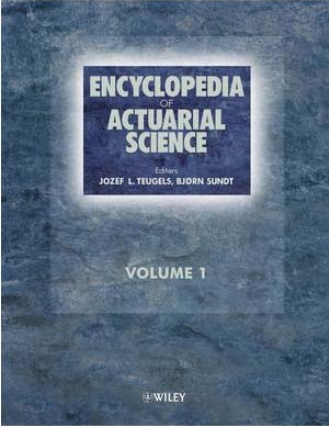
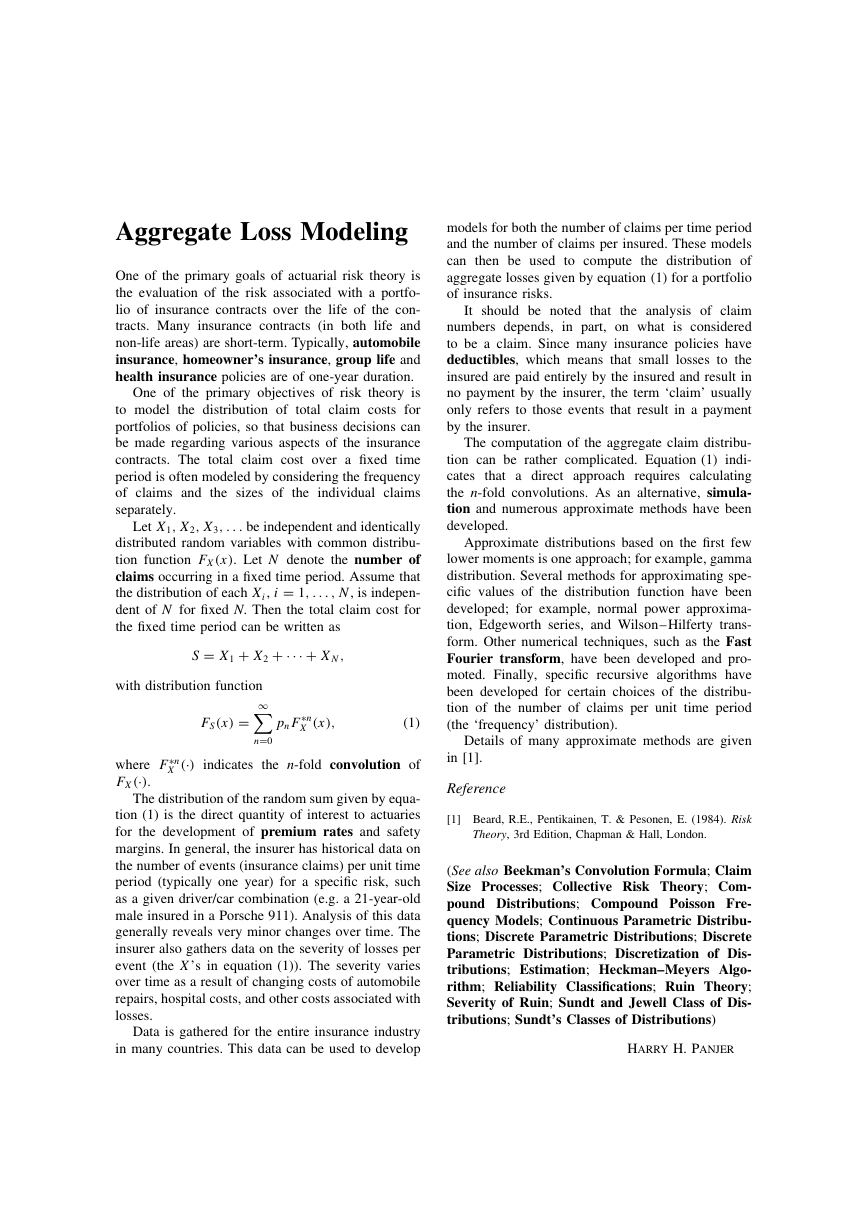
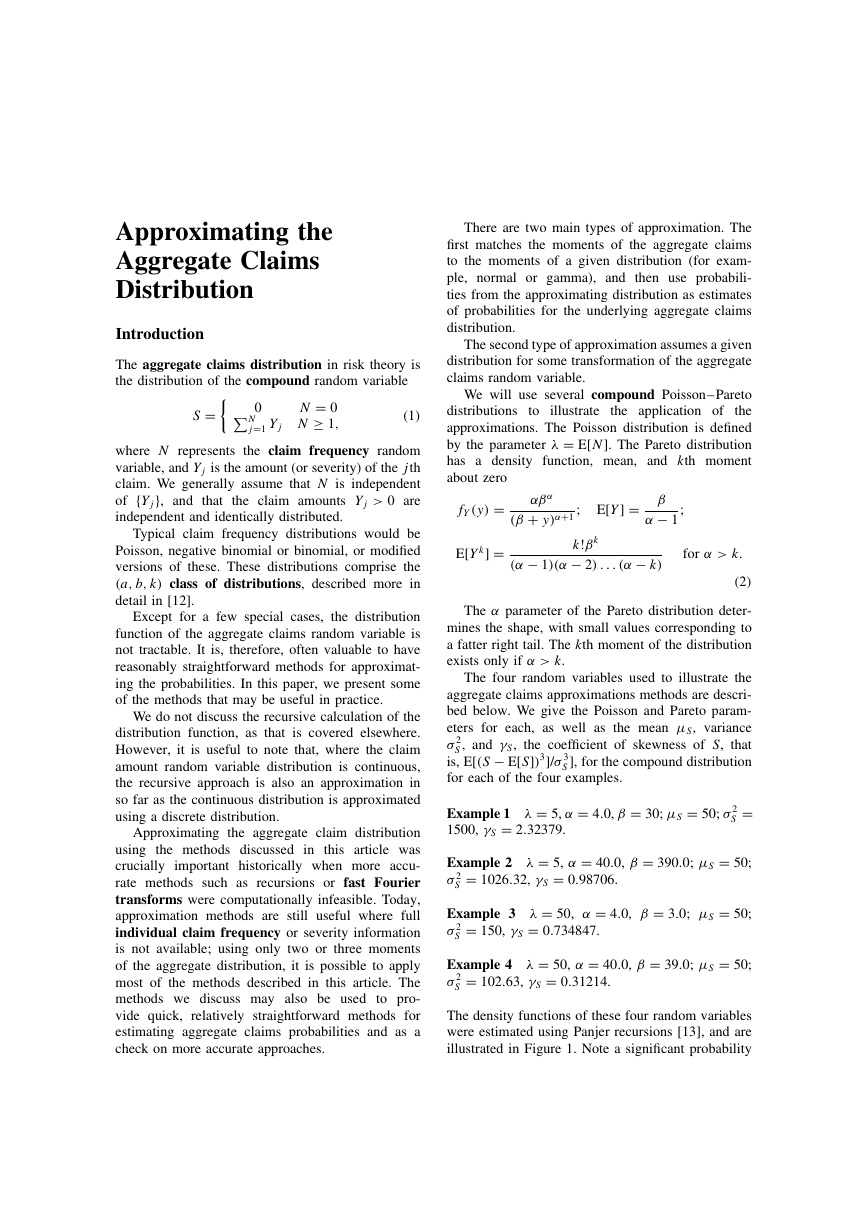

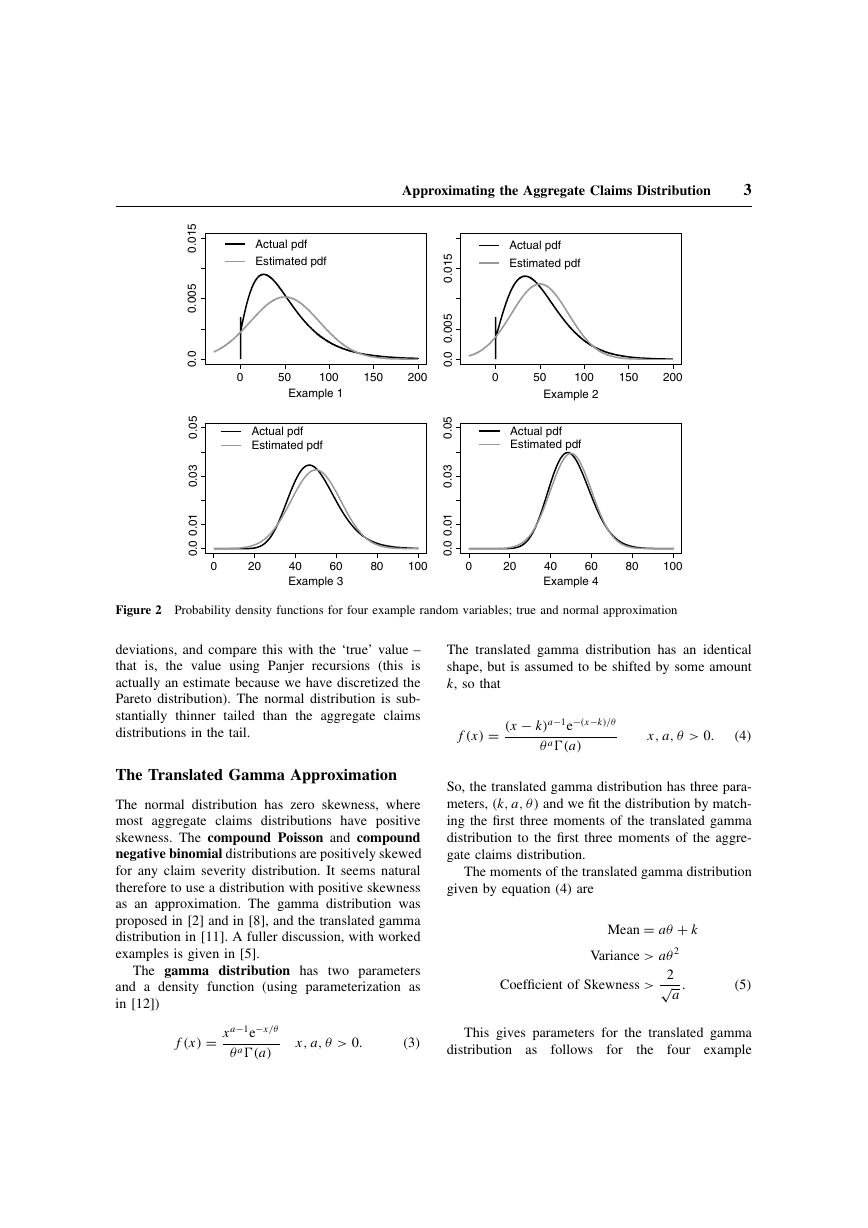
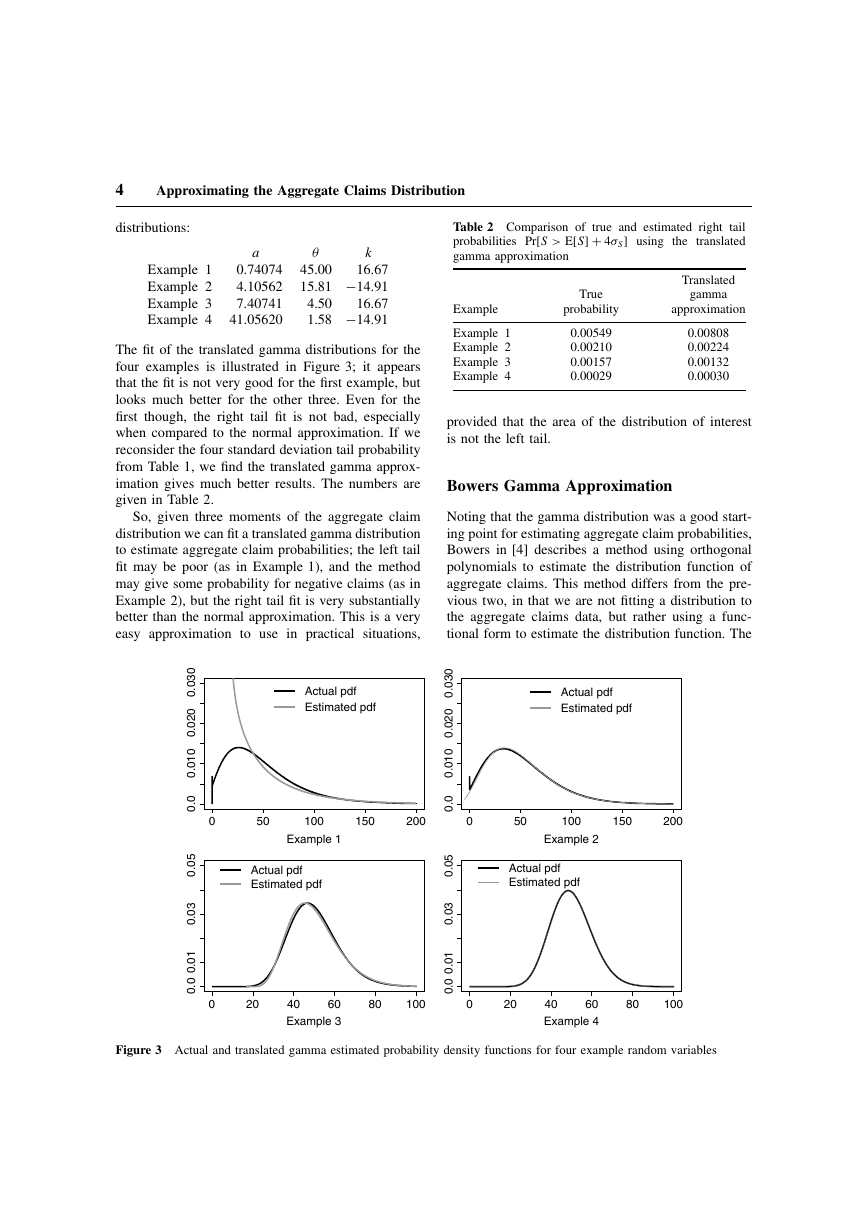
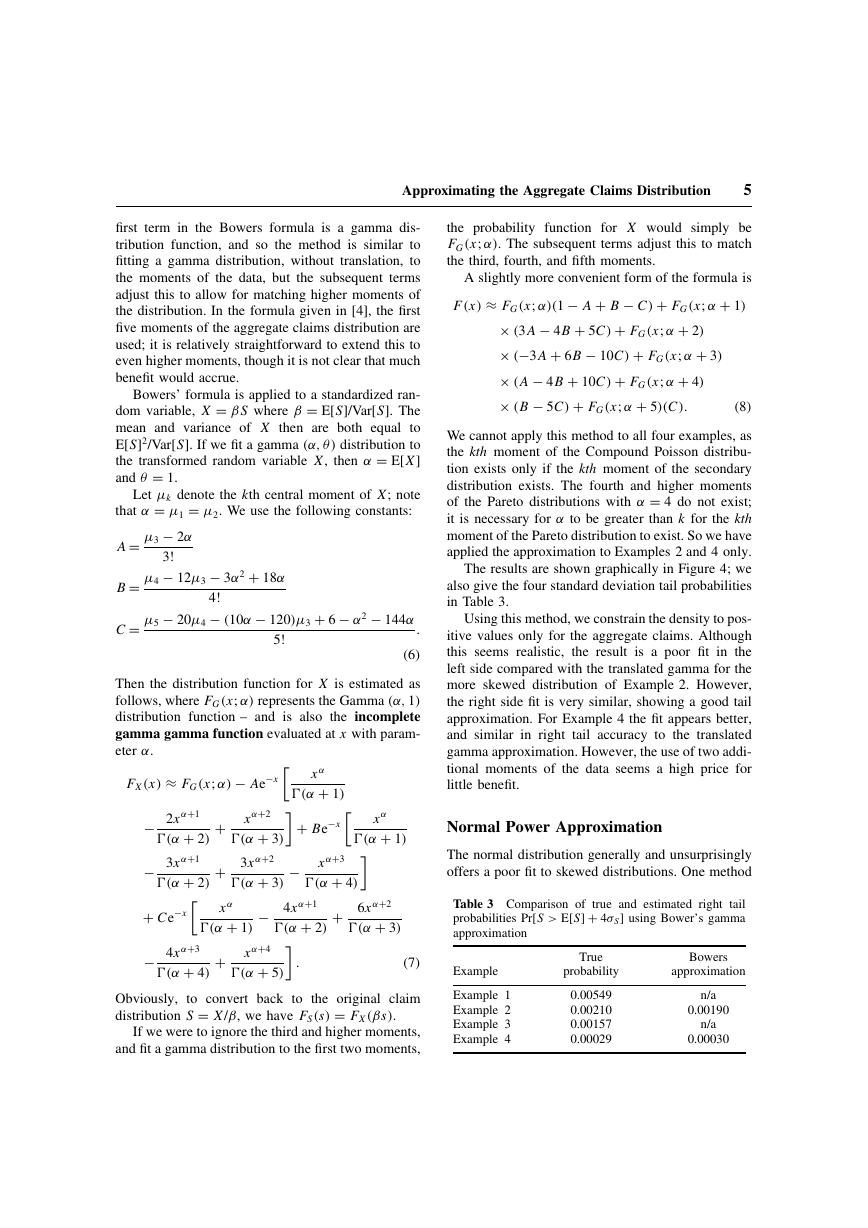
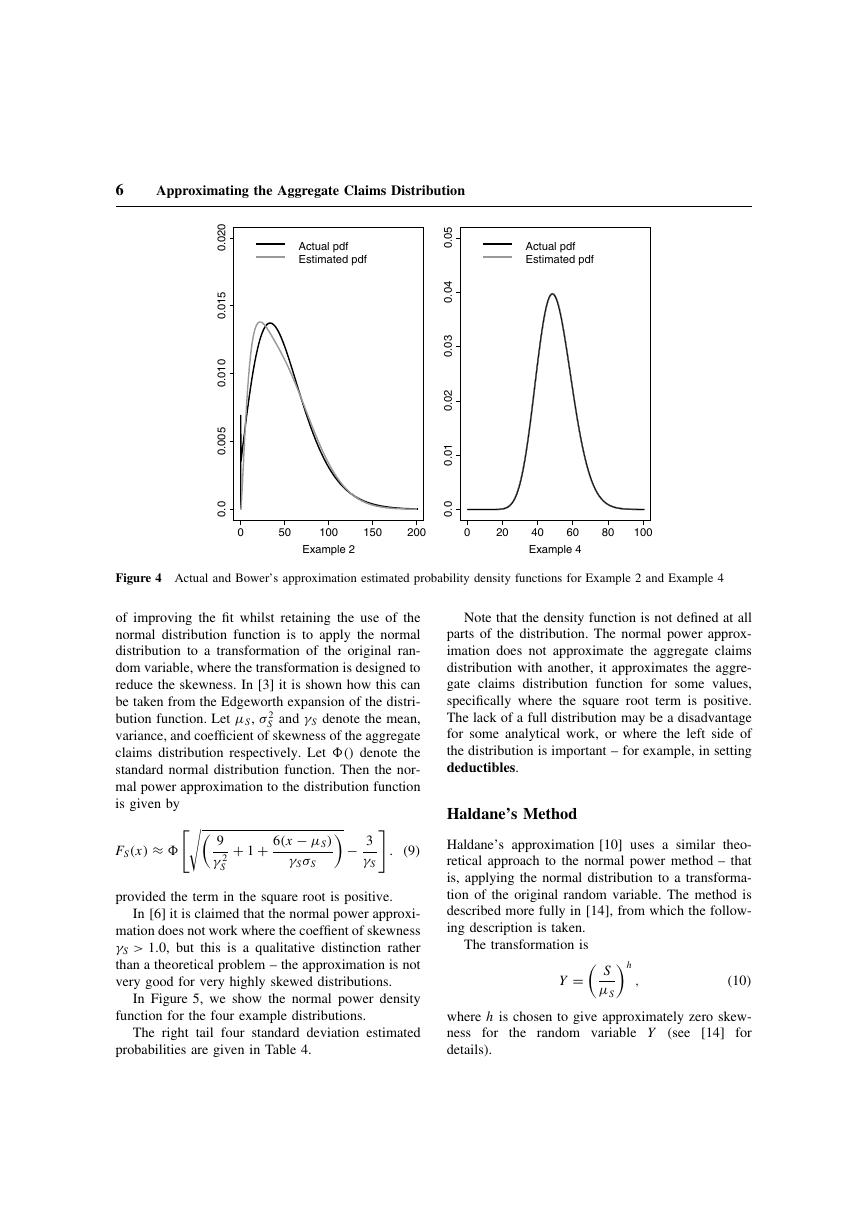








 2023年江西萍乡中考道德与法治真题及答案.doc
2023年江西萍乡中考道德与法治真题及答案.doc 2012年重庆南川中考生物真题及答案.doc
2012年重庆南川中考生物真题及答案.doc 2013年江西师范大学地理学综合及文艺理论基础考研真题.doc
2013年江西师范大学地理学综合及文艺理论基础考研真题.doc 2020年四川甘孜小升初语文真题及答案I卷.doc
2020年四川甘孜小升初语文真题及答案I卷.doc 2020年注册岩土工程师专业基础考试真题及答案.doc
2020年注册岩土工程师专业基础考试真题及答案.doc 2023-2024学年福建省厦门市九年级上学期数学月考试题及答案.doc
2023-2024学年福建省厦门市九年级上学期数学月考试题及答案.doc 2021-2022学年辽宁省沈阳市大东区九年级上学期语文期末试题及答案.doc
2021-2022学年辽宁省沈阳市大东区九年级上学期语文期末试题及答案.doc 2022-2023学年北京东城区初三第一学期物理期末试卷及答案.doc
2022-2023学年北京东城区初三第一学期物理期末试卷及答案.doc 2018上半年江西教师资格初中地理学科知识与教学能力真题及答案.doc
2018上半年江西教师资格初中地理学科知识与教学能力真题及答案.doc 2012年河北国家公务员申论考试真题及答案-省级.doc
2012年河北国家公务员申论考试真题及答案-省级.doc 2020-2021学年江苏省扬州市江都区邵樊片九年级上学期数学第一次质量检测试题及答案.doc
2020-2021学年江苏省扬州市江都区邵樊片九年级上学期数学第一次质量检测试题及答案.doc 2022下半年黑龙江教师资格证中学综合素质真题及答案.doc
2022下半年黑龙江教师资格证中学综合素质真题及答案.doc